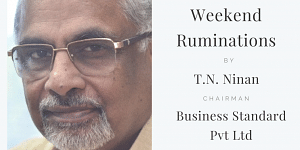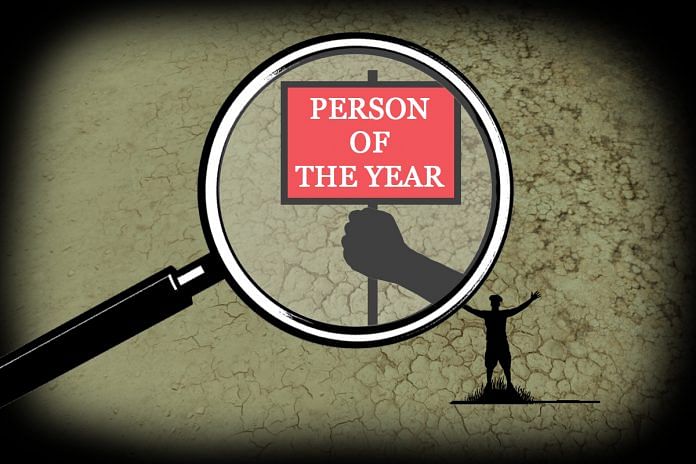The deeper problem is that no matter how many govt schemes there are for the poor, the system works more for the privileged, less for the little guy.
If there has to be an Indian person of the year for 2018, it is the little guy. The message of the recent state elections was about the farmer. The second message was about the lack of jobs, most critically for the educated unemployable. Those two facts have brought a sharper focus to the longer-term story of how inequality has grown over the years, with the benefits of economic growth going predominantly to the upper strata.
At enterprise level too, the issue is how small business has borne the impact of both the 2016 demonetisation and the goods and services tax (GST). The result now is states rushing to announce the write-off of loans to farmers, continuing GST modifications, and the active debate on the introduction of a basic minimum income for all, however costly and even unviable it may be. Even before that, the big government initiative of the year, Ayushman Bharat, was about the little guy — since benefits are designed to go solely to the bottom 40 per cent.
 About time, one should say. The story since 1991 has been mostly about the middle class, whose size has grown from tiny proportions to more than 30 per cent of all households (roughly, those with monthly income averaging about Rs 33,000 or more for a five-member family — more in a town or city, less in a village). This is the equivalent of the international norm to define the middle class as those with daily income per head of more than $10 per day, calculated using purchasing power parity. Those who today are above this level in India have a car or two-wheeler, a smart phone, cable/satellite TV and, with luck, perhaps even a personal computer.
About time, one should say. The story since 1991 has been mostly about the middle class, whose size has grown from tiny proportions to more than 30 per cent of all households (roughly, those with monthly income averaging about Rs 33,000 or more for a five-member family — more in a town or city, less in a village). This is the equivalent of the international norm to define the middle class as those with daily income per head of more than $10 per day, calculated using purchasing power parity. Those who today are above this level in India have a car or two-wheeler, a smart phone, cable/satellite TV and, with luck, perhaps even a personal computer.
That’s the top 30 per cent, what of the remaining 70 per cent? Most of that category too has benefited, as the shrinking numbers of the absolute poor testify. But it is hard to deny that the scales are tilted against them. The focus during the 2014 election campaign was the neo-middle class, or the second 30 per cent slab of the population. This was one notch above the two UPA governments’ target group (through the employment guarantee scheme, the right to food, the right to education, etc). Narendra Modi in his initial avatar mocked the employment scheme as a symbol of Congress failure. Then he changed tack, even as he introduced a slew of programmes aimed at the little guy: Jan Dhan bank accounts, the Ujjwala scheme for subsidised cooking gas, and Swachh Bharat’s programme of toilets for everyone. There is no more talk of the neo-middle class, which Arun Jaitley mentioned in his first Budget speech and then forgot about.
Also read: Modi has a McKinsey-type plan for a New India. Question is, can he make it happen
At one level, the problem today is that much of the neo-middle class and small business also feels done in. The deeper problem is that, no matter how many government schemes there are for the poor, the system in its orientation works more for the privileged, less for the little guy. Road space goes overwhelmingly to powered vehicles, not for cycle tracks or sidewalks for pedestrians. Access is similarly skewed or limited when it comes to education, public transport, the courts, medical care and the law and order machinery — all basic functions of the modern nation-state. The scales are also tilted against governments of the poorest states, like Bihar and Odisha, whose ability to spend per resident is a fraction of what it is in the better-off states. So how is convergence to come about between rich and poor states?
It doesn’t help that those who get to run representative governments come from the top 1 per cent of the top 1 per cent: The average wealth of ministers in the new Rajasthan government is Rs 150 million, in Chhattisgarh Rs 450 million. Some super-wealthy individuals skew the averages, but all 44 ministers in the two governments are crorepatis. Their rhetoric is about the little guy, but who do they really represent? Should it surprise that the system automatically starts limiting the life-chances of children in the lower strata when they have barely started to walk?
By Special Arrangement with Business Standard




India’s ministers are a lot richer than their counterparts anywhere in the world, especially the West, so that may not be a meaningful insight into poverty in India. Whether the least well off citizens will be benefited more from government largesse or the benefits of higher growth trickling down to them is an old ideological debate. It should probably be 30 : 70. This recent discovery of the plight of the poor comes too close to the election cycle to be genuine. Growth matters. Why else do people from UP and Bihar migrate so much, seasonally, as well as long term. The idea that all Indian states will one day be equally prosperous and that this will be achieved by government intervention if nothing else works is problematic, resented deeply in the South.